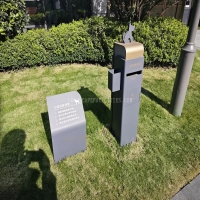Welcome to the website for landscape facilities products and knowledge.
How does the table’s design facilitate social interaction and group gatherings?
The humble table serves as far more than mere furniture; it is the silent architect of our social lives. Its design, often overlooked, plays a pivotal role in either fostering warm, engaging interactions or creating awkward, disconnected gatherings. The magic lies in specific design elements that consciously or subconsciously guide how we connect.
Perhaps the most powerful element is shape. A round table is the undisputed champion of social equality. With no head, it eliminates hierarchy and ensures every participant is visible to one another, creating an inclusive atmosphere perfect for fluid conversation. Square tables offer similar visibility but can feel formal. In contrast, the traditional rectangular table inherently creates a power dynamic, with "heads" of the table that can distance those seated at the far ends, potentially fragmenting a large group into smaller, separate conversations.
Size and proportion are equally critical. A table that is too wide physically separates people, forcing guests to raise their voices and turning an intimate chat into a shouting match. The ideal table width allows for easy conversation across the surface while still being narrow enough to pass dishes comfortably. This balance encourages a shared experience. For flexibility, extendable tables or modular designs are social saviors. They can be compact for daily use but expand to accommodate larger parties, ensuring no one is left out.
Beyond form, the material and texture contribute to the ambiance. A warm wood grain or a soft, matte finish feels inviting and tactile, encouraging people to lean in and relax. A cold, reflective glass or marble surface, while elegant, can feel more sterile and formal, potentially creating a subtle psychological barrier. The base design is also crucial; a bulky pedestal allows for more legroom and easier seating around the entire perimeter, whereas four legs can create obstacles at the corners.
Ultimately, a socially intelligent table design is one that prioritizes people. It considers sightlines, acoustics, comfort, and flexibility. It is a stage that brings us together, minimizes barriers, and makes us feel connected. The next time you choose a table, look beyond its style; see it as an investment in future laughter, deep conversations, and the simple, profound joy of being together.
Related search:

Recommendation
Outdoor cat and dog feces trash can; Community pet trash can; Metal multi-color design